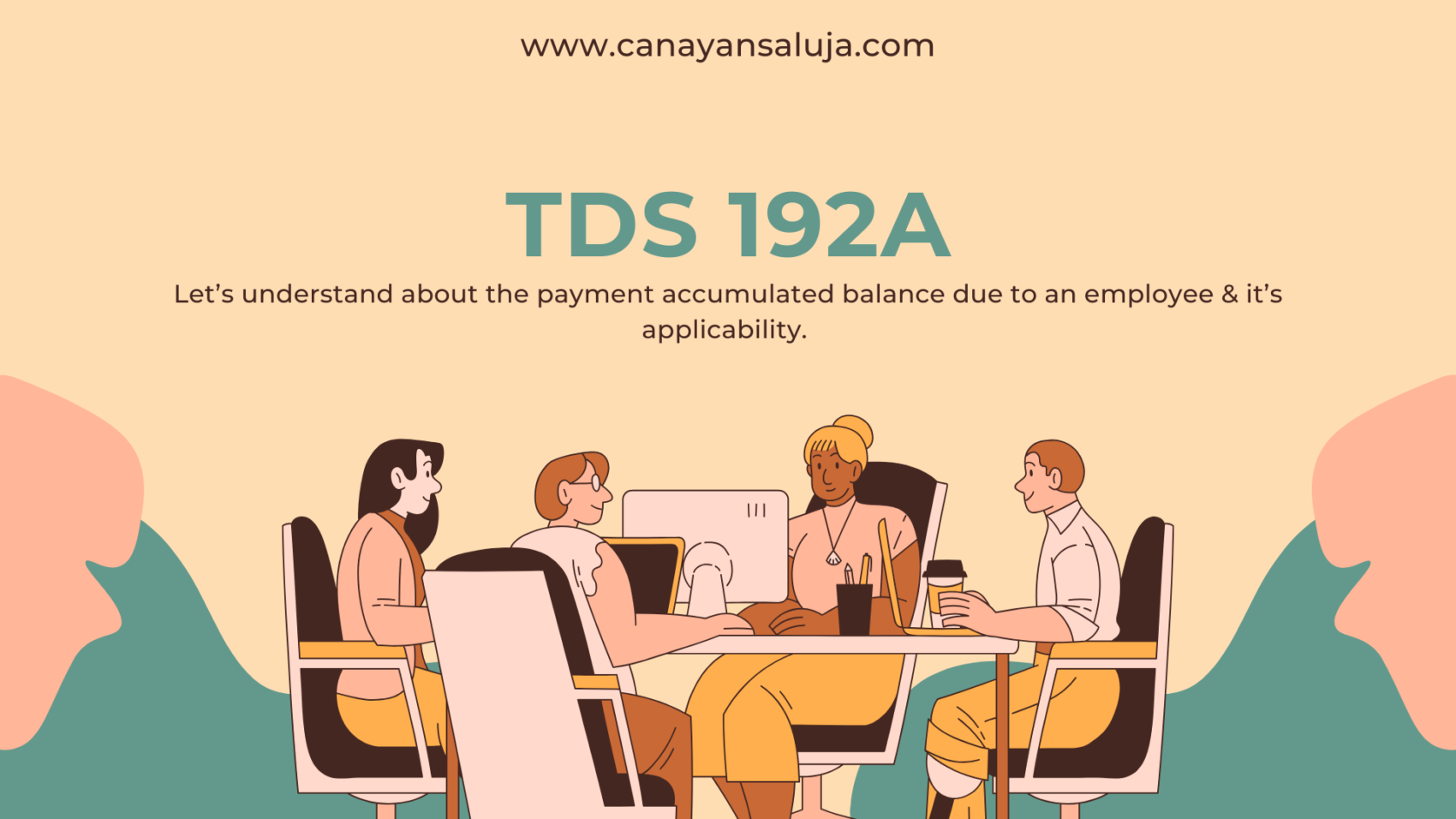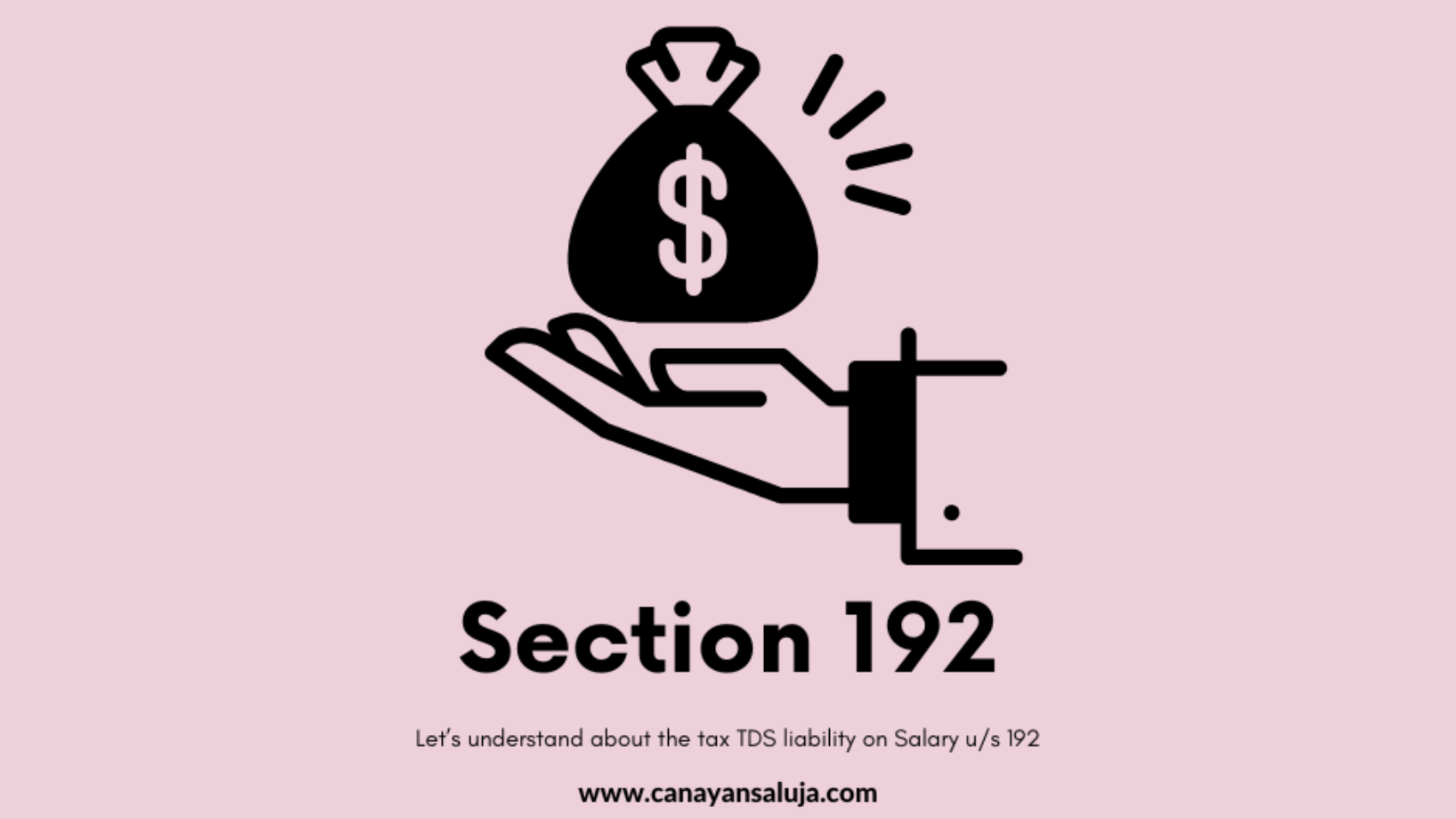TDS U/S 194D: TDS ON INSURANCE COMMISSION
TDS stands for Tax Deducted at Source. TDS is a kind of tax that is deducted by the payer before making certain payments like Salary, Rent, Commission, Interest, Royalty, Professional Fees etc. to the payee.
TDS is required to be deducted at the source if the money to be paid and the money already paid exceeds a specified amount.
The Payee can claim this tax deducted by the payer while paying his income tax liability for the year, and if the TDS deducted is more than the income tax liability of the assessee then he/ she will be entitled to a refund.
The main purpose of introduction of TDS was to reduce the Tax evasion by the person receiving the income.
Note: –
Payer- A payer is a person or organization who is responsible for deducting TDS before paying the amount to Payee.
Payee- A Payee is a person or organization who receives the payment from the payee after the TDS deduction.
Section 194D of Income Tax Act, 1961 mandates that TDS to be deducted by the payer while making payment to resident persons by way of commission for the following purposes: –
TDS is required to be deducted: –
Or
Few examples of date of deduction are: –
|
S.no |
Date of Payment |
Date of crediting the party in books of accounts |
Date of TDS deduction |
|
1. |
30/04/2024 |
30/04/2024 |
30/04/2024 |
|
2. |
30/04/2024 |
01/05/2024 |
30/04/2024 |
|
3. |
01/05/2024 |
30/04/2024 |
30/04/2024 |
|
4. |
01/05/2026 |
30/04/2024 |
30/04/2024 |
Any person while making above mentioned payments to the resident person during the financial year is required to deduct TDS u/s 194D (provided the income exceeds Rs.15,000).
NOTE: –
This section i.e. TDS on payment of Insurance commission is not applicable while making such payments to non-residents.
Example: –
Q. Mr. Dhanraj is an insurance agent for LIC, during the year his income from insurance commission was Rs. 1,20,000 he filed formed 15G/ 15H with the LIC stating that my income is below exemption limit. At what rate TDS should be deducted in this case?
A. In case of insurance commission the rate of TDS 10% if the income form insurance exceeds Rs. 10,000 but in this since the payee has submitted form 15G/ 15H to the payer no TDS liability arises in hand of the payer, so no TDS is required to be deducted.
The TDS rate under this Section is: –
|
Sl no. |
Nature of payment |
TDS if pan is available |
TDS if pan not available |
|
1. |
Payment to resident other than company. |
. 5%* |
. 20% |
|
2. |
Payment to resident company |
10% |
20% |
NOTE: –
It is to be noted that effective 1st April 2025 the TDS rates for payment of insurance commission to residents other than company will reduced to 2% from 5%.
No TDS if: –
The due date for deposit of TDS is as below: –
|
Month |
Due Date |
|
April |
On or before 7th May. |
|
May |
On or before 7th June. |
|
June |
On or before 7th July. |
|
July |
On or before 7th August. |
|
August |
On or before 7th September. |
|
September |
On or before 7th October. |
|
October |
On or before 7th November. |
|
November |
On or before 7th December. |
|
December |
On or before 7th January. |
|
January |
On or before 7th February. |
|
February |
On or before 7th March. |
|
March |
On or before 30th April. |
TDS is to be deposited monthly on the dates mentioned above but the return is to be filed quarterly on or before the below mentioned dates: –
|
Quarter |
Period |
Due date (TDS filing) |
|
1St quarter |
April-June |
31st July. |
|
2nd quarter |
July-September |
31st October. |
|
3rd quarter |
October- December |
31st January. |
|
4th quarter |
January- March |
31st May. |
9.Type of TDS return & form to be issued?
TDS under this section has to filed quarterly through FORM 26Q and the deductor has to issue FORM 16A to the employee after filing of return.
Following penalties/fees will be levied if there is delay in TDS deduction or delay in deposit of TDS or non-filing of quarterly return.
|
Particulars |
Penalty |
|
TDS not deducted on time. |
1% per month or part of month. |
|
TDS deducted but not deposited before due date |
1.5% per month or part of month. |
|
TDS return not file on or before due date |
200 per day maximum till TDS amount. |
FREQUENTLY ASKED QUESTIONS?
Q. What is the threshold limit for TDS under 194D?
A. The threshold limit for TDS under 194D is Rs. 15,000.
Q. Whether TDS is required to be deducted under 194D if insurance commission is paid to non-resident?
A. NO, this section only covers payment of insurance commission made to resident persons only. So, TDS u/s 194D is not deductible when making payment if insurance commission to non-resident persons.
Q. Is TDS deductible under section 194D for reinsurance commission?
A. NO, under section 194D TDS is not deductible for reinsurance commission.
Q. At what amount TDS is to be deducted gross or net?
A. TDS should be deducted at the net amount after deducting all taxes like GST.
Q. What is the benefit of 2% TDS to Insurance agents?
A. The agents will receive higher payout and will be able to use money throughout the year rather than waiting for a refund.
Q. Is there any way to reduce or avoid TDS under Section 194D?
A. Yes, the payee can submit form 15G/ 15H to the payer or apply for a lower deduction certificate under Section 197 to reduce or avoid TDS.











